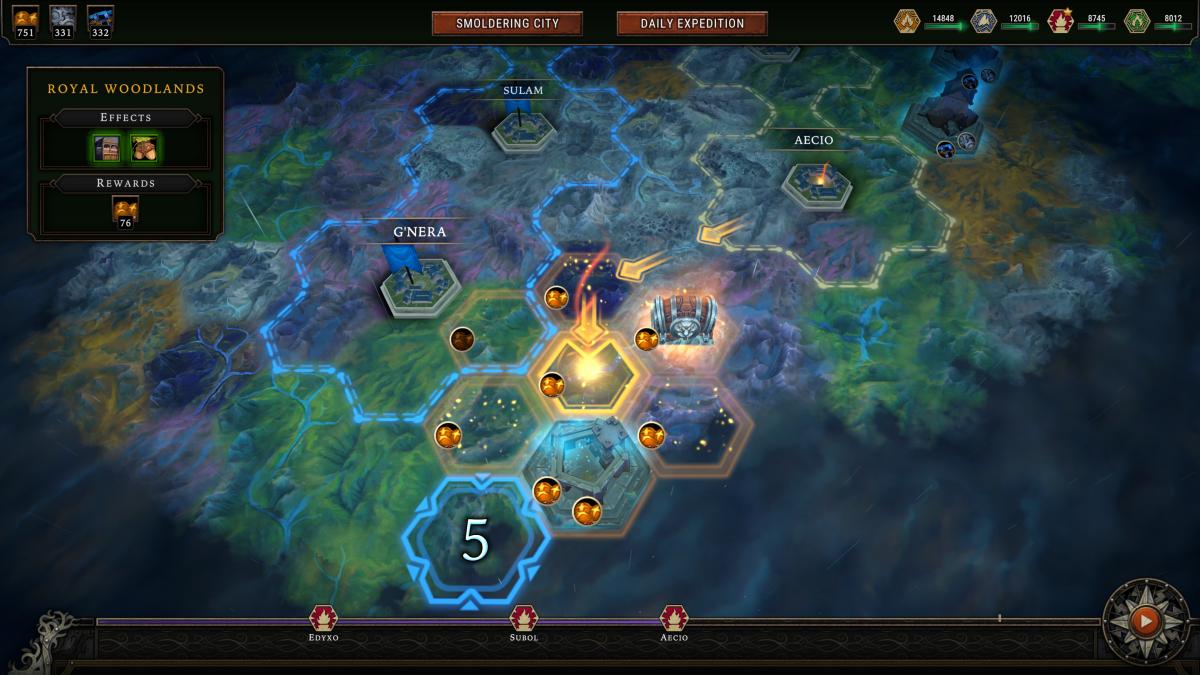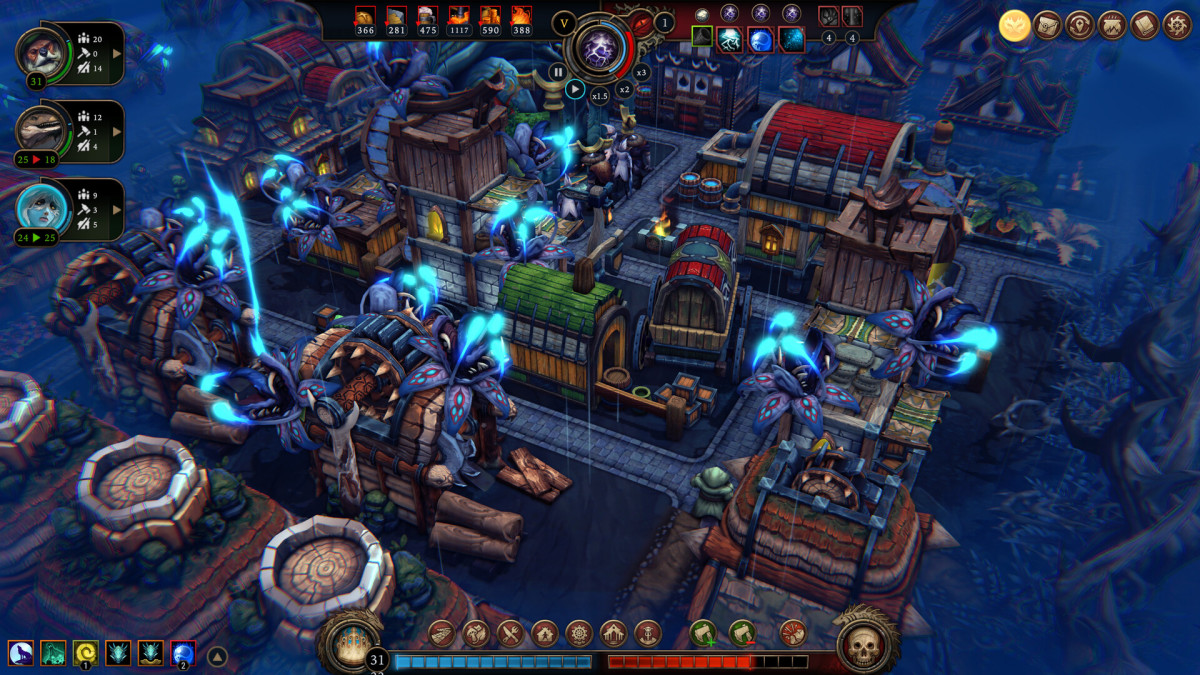Best city-building game 2023: Against the Storm

It’s the year in which Cities: Skylines 2, the sequel to the most celebrated city-builder of the last decade, finally released, and we’re not crowning it as the best city-building game of 2023. Sure enough, its own shortcomings provide ample ammunition for criticism, even though at its core lies a very strong genre representative. You just have to dig through a whole bunch of issues to find it. But it’s not the failures of Cities: Skylines 2 that make Against the Storm take the crown.
Developed by Eremite Games and published by Hooded Horse, Against the Storm has been in Early Access for almost exactly two years before finally graduating into a full release earlier this month. In these two years, Eremite Games expanded and refined the game with updates every second week – legends say that these updates were so punctual and regular that even Swiss trains couldn’t compete with them. It’s not just that these patches came so regularly. Sure, not every single one of them contained a massive content update, but they always delivered some feature or improvement the community asked for. Eremite Games was very transparent during this development period and always took into account what the player base was saying. None of the “we hear you and value your opinion” deflection, but actual feedback implementation.

This is just background, really, to show what a labor of love Against the Storm is – what a prime example of Early Access done right it is.
What makes Against the Storm such a great game? A big aspect, certainly, is the unique mix of elements found in it. There is the city-building, of course, but it’s embedded into this mechanical foundation of a typical roguelike that provides a sense of progression and keeps things fresh.
Against the Storm is set in a charming and intriguing “rainpunk” setting. From a hub city you go out into the world and place settlements at different locations. Where you place these towns on the map influences things greatly, as there are several biomes containing different resources and landmarks that provide special modifiers to settlements founded nearby. Placement is also critical for the rewards completing that town provides you for the meta-progression, so you have a little bit of a strategic layer going on here as well. And even this is subject to the neverending mix-up of the roguelike element, since – after a certain amount of settlements have been placed and completed – a storm will wash everything you built up away, changing the landscape again.

Only the hub city, where you invest the resources you’ve gathered during the previous cycle into upgrades, is permanent. Those upgrades can be passive modifiers, new options for additional starting resources, and so on. As you complete towns and upgrade your hub city, you’ll gain XP and in turn unlock even more substantial content like brand-new buildings and settler types. That really keeps you motivated to get out there and build those towns – and as your level rises, you’ll get to build more of them before the cycle ends, in essence giving you more exploration range on the world map.
Building so many towns sounds tiresome, you might say, and in any other city-builder that may be true. But that is where another brilliant aspect comes into play: Against the Storm’s cities do not overstay their welcome. You’re not expected to manage dozens of buildings with hundreds of citizens working thirty different production chains. It’s the exciting and engaging early game that Against the Storm focuses on – the part where every resource and every settler counts.
A town is usually “completed” whenever you’ve gained enough reputation with the Queen through fulfilling the missions she’s given you – you actually get a limited set of alternatives to pick from, giving you some control over your goals. And that’s important, because the city-building, too, is a servant of the roguelike concept. Aside from some standard buildings, your complete arsenal of available structures is decided as you play, which means that you’ll need to plan spontaneously and improvise a bunch. If that sounds frustrating, then don’t worry, because it isn’t: Against the Storm’s production chains and buildings are designed in such a way that you’ll very likely get to where you want to get, even if it isn’t the most efficient way.
Take a Cooking House, for example. It can make skewers and bake biscuits, two advanced food types that provide happiness to certain settler types. But as a third resource, it can also produce pigments for use in other production chains. A Smithy can do what you think it does, but on top of that can bake cakes with the ovens it has. In this way, the game provides you with paths – you might say build options – that’ll get you to your destination in a roundabout way.

You can also export goods via trade routes, which cleverly enough is easier towards the end of a cycle, since you’ll have built up more potential trading partners, or have imported things from merchants visiting your town. As you fulfill the Queen’s orders, you gain additional building blueprints as well as passive modifiers.
There is some danger when building up towns, of course, to put a little pressure on you. If you’re not fulfilling the Queen’s orders or gaining reputation by making your citizens happy and solving mysteries you encounter along the way, your ruler will get impatient with you, which is essentially a ticking time bomb. The elements themselves are a threat as well: Storms sap away at your settlers’ morale, potentially making them leave the settlement. And though you can use the water left behind by these magical storms to power your buildings and raise their efficiency, beware of the side effects of what is essentially a radioactive material.
You begin each game in a glade inside unknown territory and have to cut your way through the foliage to other glades, which contain more resources as well as events. These can be a threat and need to be dealt with quickly, while others are just goodies, which provide resources upon completion or can be sent back to the hub city, increasing your reputation. You never know what you can expect from the next glade – and before you know it you’ll have completed your current town.
Against the Storm’s elements all fit together so perfectly and are packaged in such a charming way as well, it just sucks you in and doesn’t let you go. Even if you never finish a town while playing other city-builders, you will in Against the Storm. And you’ll build the next and the one after that, because you want to see what cool stuff is locked behind the next level and what it adds to your repertoire.

Against the Storm was Steam Deck-verified recently as well and I can tell you that the handheld PC and the game are a lethal combination – for your other hobbies, that is. Controls work great on the Deck and the visuals translate to the smaller screen without any issues.
There is no doubt that Against the Storm is the best city-building game of 2023.
